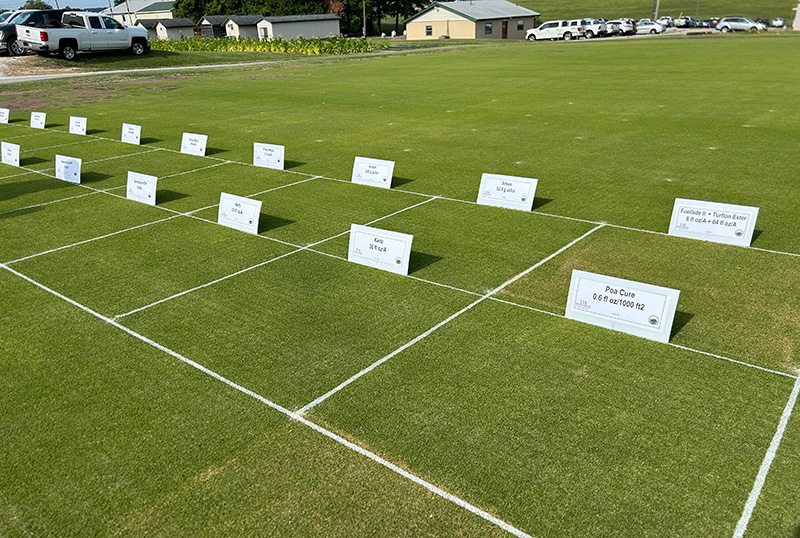
The first Verdure article to appear in GCM was in May 2014. The 100th article was printed in the August 2022 issue. So, let’s celebrate a happy belated 100th anniversary of the Verdure column.
The purpose of Verdure is to provide a concise summary and interpretation of research on various turfgrass science topics. These research papers are first published in scientific journals that traditionally were only available to members of the scientific
society or organization that produced that journal. Today, however, more research is now getting published as open access and therefore easily downloaded from various websites.
What were the sources of information used for these articles?
A total of 101 sources were reviewed from 20 scientific journals, three textbooks and one cooperative Extension publication. Approximately 97% of the source material was from research journal articles: Crop Science (35%), Agronomy Journal (15%), HortScience
(13%) and the remaining 34% from various research journals, such as Applied Soil Ecology; Applied Turfgrass Science; Crop, Forage and Turfgrass Management; International Turfgrass Society Research Journal; Journal of Environmental Quality; Journal
of Nematology; Journal of Plant Nutrition; Plant Disease; Weed Science; Weed Technology; and a few others.
Historically, most turfgrass science research has been published in Crop Science, Agronomy Journal and HortScience. Crop Science is published by the Crop Science Society of America, Agronomy Journal by the American Society of Agronomy, and HortScience
by the American Society of Horticultural Science. Most turfgrass science researchers in academia, government and industry actively participate in the Turfgrass Science Division within the Crop Science Society of America. The American Society of Agronomy,
Crop Science Society of America and Soil Science Society of America co-host a scientific conference every year in the fall (i.e., this is the “nerd researcher’s version” of the annual GCSAA Conference and Trade Show and includes
research presented by undergraduate and graduate students).
Who were the primary authors or principal investigators?
Most source material had multiple names listed as authors and co-authors, thus reflecting good collaboration among researchers, principal investigators and graduate students in academia, government and industry. Doug Soldat, Ph.D., (University of Wisconsin)
has the most with six Verdure articles credited with his name on the source citation. James Murphy, Ph.D., (Rutgers University) and Peter Dernoeden, Ph.D., (emeritus; University of Maryland) have five citations each. Many researchers have one, two,
three or four citations.
What were the topics or focus of those Verdure articles?
The majority (77%) of those Verdure articles reviewed research about cultural practices (31%), plant physiology (23%) and plant protection and plant growth regulators (23%). The remaining 23% of all Verdure articles covered various topics on biostimulants,
environment and ecology, plant breeding, plant genetics, and soil. Among those articles on cultural practices, the focus was on fertilization and nitrogen fertilizers, followed by irrigation and mowing. With plant physiology, the focus was on abiotic
stress, temperature, light and plant nitrogen assimilation. With plant protection and plant growth regulators, the focus was on disease, weed, insect and nematode control.
What were primary turfgrass species of focus?
Of those 100 Verdure articles, 47% were about cool-season turfgrass, 23% warm-season turfgrass and 30% other (i.e., multiple turfgrass species, soils and root zones, and other subjects). Those articles focused on cool-season turfgrass were composed of:
64% creeping bentgrass, 24% annual bluegrass, 4% annual bluegrass/creeping bentgrass, 4% Kentucky bluegrass, 2% fescue species and 2% perennial ryegrass. Those articles focused on warm-season turfgrass were composed of: 75% bermudagrass, 17% zoysiagrass
and 9% seashore paspalum.
Thank you, everyone, for your continued interest and support of Verdure in GCM. This column represents Verdure number 116 … and counting.
Mike Fidanza, Ph.D., is a professor of plant and soil science in the Division of Science, Berks Campus, at Pennsylvania State University in Reading, Pa. He is a 22-year member of GCSAA.